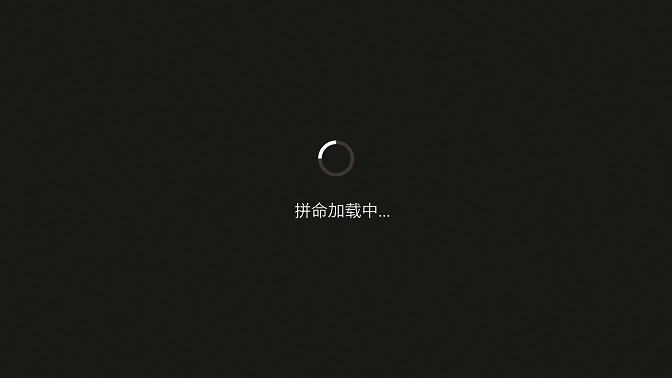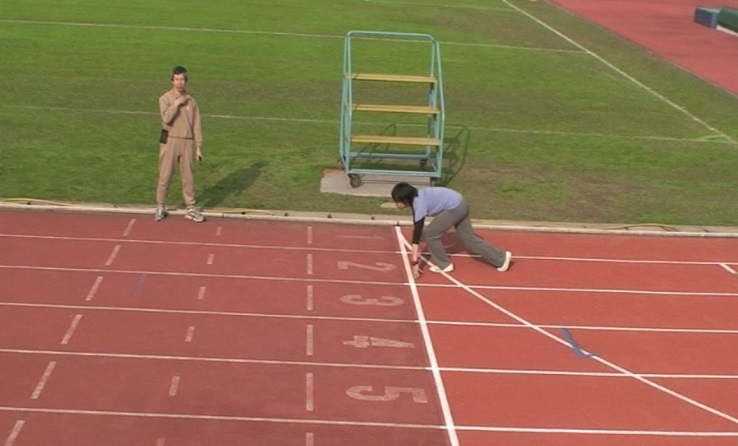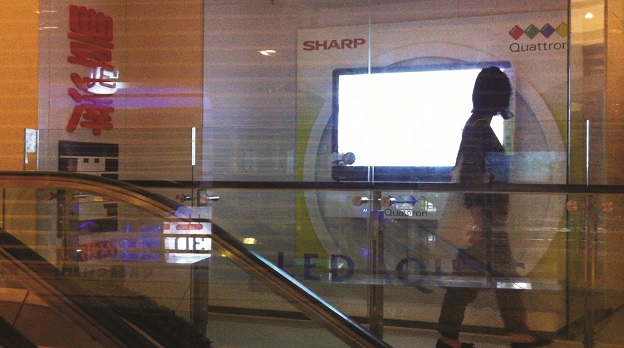藝評
Sunday Lai’s 1Mbps
楊陽 (Yang YEUNG)
at 7:06pm on 27th October 2014





Captions:
1. 1 Mbps, 2014, duration: 1 minute.
2. Basic Movement, 2010, duration: 10:07 minutes.
3. Going to watch TV, 2011. duration: 4:20 minutes.
4. Trace! 2009, oil and pencil on the wood, dimensions variable.
5. Try to find poetry in banality, 2008, papers and photos, dimensions variable.
(原文以英文發表,評論黎朗生的作品。)
Brevity of expression, coupled with agility of mind, makes Sunday Lai’s latest video 1Mbps one of her finest. In the one-minute work made with the technique of stop motion, a grey and white spinner icon in a dark background is all that is visible on the screen. The icon we are accustomed to when data hunting, routinely experienced as a thing in the passing, is offered up for a longer ponder.
One narrative possibility of the icon that 1Mbps explores regards its subservient relation to data. For data to be transmitted up to speed, the icon is designed to render itself into destruction – the faster, the better. In 1Mbps, the icon, however, does not point to data yet to come – that is, data in its uploading state. Rather, it becomes a moving drawing imbued with an energy of its own, producing time as thickened, resisting the oppression of speed that dictates the way we are.
The work also repositions the place of human activity in our technologically mediated lives. It provisionally frees us from our imperative to access data (and our tendency to fret when access is delayed or denied) by compelling us to reflect on our compulsive desire for the uploading state to end. To see the moving drawing of the spinner icon is to see the truth of all that we anticipate and associate with when armed with the power that one click promises.
But of what kind are these promises? How have they been directing our attention? We begin to ask. The artist’s invitation for us to linger over simple but vital questions makes the human activity of wondering a valuable end in itself, not a means serving some other ends, not a barrier for life to move on.
Lai’s interest in emptying things, sites, and situations of received and instrumental function has come up in her past works. Immediate references could be made with the series of ‘actions’ she takes in Going to watch TV. She visits shop windows of electronic appliance retail stores at night. In response to the video black of a TV switched off (one of the three video blacks’ that Bill Viola proposes), placed in a position of prominence by spatial design, Lai uses a remote control to switch the TV on. She re-sets the parameters that regulate the ‘playing’ (switching on and off) and ‘displaying’ (showing the TV as consumer item) in social space. In doing so, her body becomes a stylus that intervenes in the human-technology relation. What still begs questions is the way she selects content – or how she regards the content played and displayed. In the interventions, how content might constitute intervention does not seem to be an integral narrative device. It would be interesting to find out why and how it could have given varying force to her acts.
In a similar way, Basic Movement is a series of performances where Lai draws with her body. She runs in the opposite direction of others on a track in a sports ground, swims a line perpendicular to others in a public swimming pool, and jumps over the tennis net in an empty tennis court. While these performances take place as if in separation from any technological device, one could argue that the spaces by design are technological apparatuses that systematize and standardize our experience of space – the materials used to draw boundaries, limits, divide whole into parts, etc. What makes 1Mbps as a corporeal intervention different, however, is that 1Mbps focuses more on the technological as an objective phenomenon, and less the question of personal ownership of routinized social space. By rendering space into limbo, 1Mbps highlights the peculiarity of human attention itself, which brings me to the last point regarding 1Mbps.
When Lai was still a student at the Academy of Visual Arts (AVA), she presented Try to find poetry in banality (2008), inspired by fluorescent cards used frequently in retail shops in Japan and Hong Kong for product descriptions. Imagining the hand written texts erased and the call to consumers silenced, Lai arranges one hundred blank cards into a rectangle on the wall. Pure panels of colors conjure up a sense of incongruous beauty. Then, in the graduation show in 2009, Lai hangs multiple, small paintings on the peeling walls of a room on campus. The wall is partly painted white, partly revealed as wood. Lai intervenes by hanging small, centimeters-thick wood blocks of varying shades of brown in varying states of being scrapped and painted on the wall. One could regard the small panels as extending the painted or unpainted patches of the wall; one could also regard them as gestures that enlarge and proximate the details of the edges of the paint. Either way, Lai engenders and enchants material encounters.
Lai has categorized these works under ‘Painting’ in her website. I find it tempting to dispute this and call these two works installations, for the way she arranges cards on the wall and includes the photographs showing her sources of inspiration in Try to find poetry in banality, and for the way she sets up the fragments of scrapped paint on the floor, stacks of small wooden panels in them, and larger and darker wooden blocks on the side, as if creating an aesthetic of a certain construction in progress, in Traces. I don’t know anything about Painting in general, if there is such a thing, but I find it more interesting to make a case for her two works as indeed Painting because they highlight how a painting, a wall (and the wall only) that frames it, and the visible gestures of the artist are fixated onto the form of painting-on and paint-to the wall. In these works, Lai’s painterly gestures are continuous with the things and spaces she works with. They all belong to the idea of painting itself.
In the same way Try to find poetry in banality and Traces impregnate our otherwise stale modes of perception, 1Mbps brings this sensitive quality of mind, this artistic choice of letting recede and letting unfold, to a different material reality.
I can imagine how these works come together in the way Lai confers humanity on the banal – gleaning what is wasted away in our routine attention to other things, holding it dear.
This article was first published in September 2014 issue of AM Post, Hong Kong .
